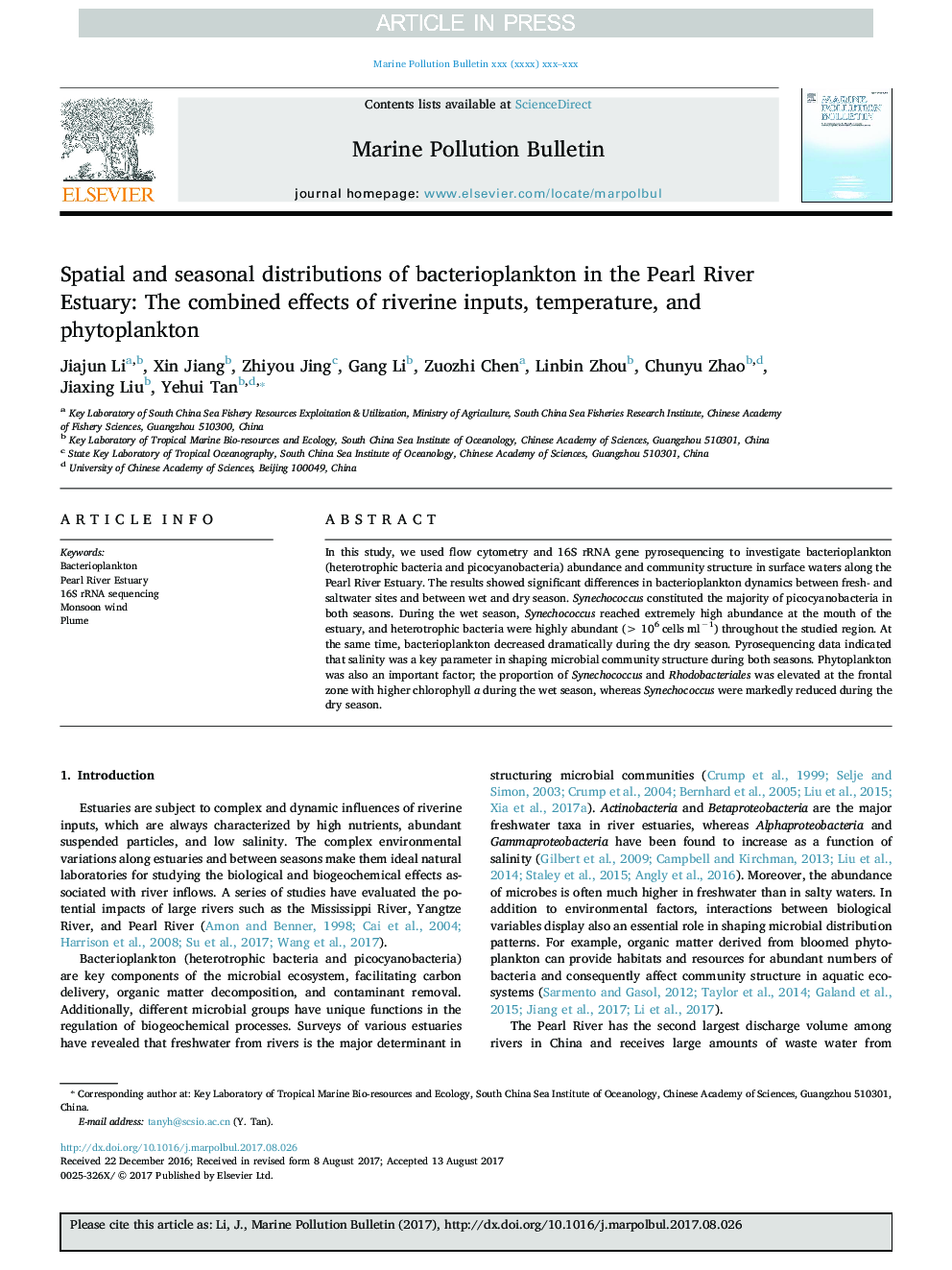| Article ID | Journal | Published Year | Pages | File Type |
|---|---|---|---|---|
| 8871921 | Marine Pollution Bulletin | 2017 | 9 Pages |
Abstract
In this study, we used flow cytometry and 16S rRNA gene pyrosequencing to investigate bacterioplankton (heterotrophic bacteria and picocyanobacteria) abundance and community structure in surface waters along the Pearl River Estuary. The results showed significant differences in bacterioplankton dynamics between fresh- and saltwater sites and between wet and dry season. Synechococcus constituted the majority of picocyanobacteria in both seasons. During the wet season, Synechococcus reached extremely high abundance at the mouth of the estuary, and heterotrophic bacteria were highly abundant (> 106 cells mlâ1) throughout the studied region. At the same time, bacterioplankton decreased dramatically during the dry season. Pyrosequencing data indicated that salinity was a key parameter in shaping microbial community structure during both seasons. Phytoplankton was also an important factor; the proportion of Synechococcus and Rhodobacteriales was elevated at the frontal zone with higher chlorophyll a during the wet season, whereas Synechococcus were markedly reduced during the dry season.
Related Topics
Physical Sciences and Engineering
Earth and Planetary Sciences
Oceanography
Authors
Jiajun Li, Xin Jiang, Zhiyou Jing, Gang Li, Zuozhi Chen, Linbin Zhou, Chunyu Zhao, Jiaxing Liu, Yehui Tan,
